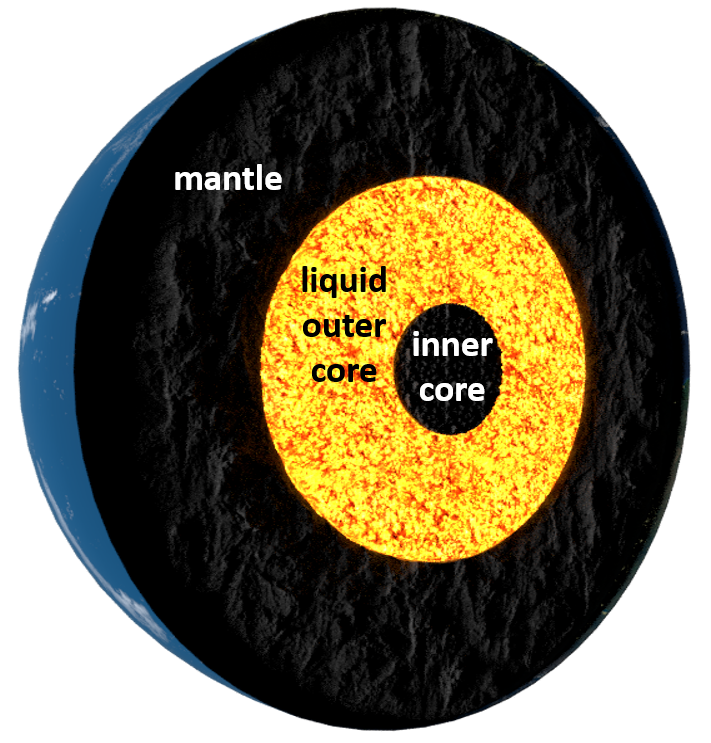A study on the rotation of the Earth’s solid core confuses the media. Scientists of the Royal Observatory of Belgium clarify it
An article in Nature Geoscience on the rotation of the Earth’s core (more precisely its solid inner core) was recently published. However, the media have been misled by the press release of the science journal into thinking that the inner core stopped rotating or was even rotating in the opposite direction to that of the Earth surface, which is not the case at all. Scientists of the Royal Observatory of Belgium specialised in the rotation of the Earth and planets clarify the study and provide some information on the structure and rotation of the Earth.
Internal structure and rotation of the Earth
 The interior of the Earth is divided into concentric layers. A few tens of kilometres below the surface begins the solid mantle, which extends to a depth of about 2900 km. Below that is the Earth’s core, which consists mainly of iron. The core is subdivided into an upper liquid layer down to a depth of about 5150 km and a central solid inner core with a radius of about 1220 km. The article in Nature Geoscience article is about the solid inner core.
The interior of the Earth is divided into concentric layers. A few tens of kilometres below the surface begins the solid mantle, which extends to a depth of about 2900 km. Below that is the Earth’s core, which consists mainly of iron. The core is subdivided into an upper liquid layer down to a depth of about 5150 km and a central solid inner core with a radius of about 1220 km. The article in Nature Geoscience article is about the solid inner core.
The Earth revolves around its axis of rotation in 24 hours. Movements in the Earth’s atmosphere, hydrosphere and liquid core can cause small variations in the rotational period, so-called “length-of-day variations”, which can be on the order of milliseconds. The different layers that make up the Earth are linked by gravity and the frictional force and the electromagnetic force between the core and the solid parts. Therefore, the rotational period of the solid inner core can show small variations compared to the rotation of the mantle.
The Nature Geoscience study
By analysing seismic data from the last ~70 years, Yi Yang and Xiadong Song of Peking University (China) have revealed small differences between the rotational periods of the inner core and mantle that oscillate in time with an estimated period between 60 and 70 years. The authors show a correlation between the period of this oscillation and the multidecadal variation in length-of-day and point to the possibility of a connection between the two phenomena. Other theoretical interpretations of the data are possible, and future research (including research at the Observatory) will help answer this question.
What the study does not say
The study does not claim that the inner core would have stopped spinning or would have started spinning in the other direction (i.e. from east to west). Such a spontaneous reversal is impossible according to the laws of physics (conservation of angular momentum). It would have quite spectacular consequences for the magnetic field generated in the liquid core, which can be observed from the surface. However, none of this happened.
The study contributes to a better understanding of the Earth’s core and is therefore interesting.
Reference of the article:
Yi Yang and Xiaodong Song, Multidecadal variation of the Earth’s inner-core rotation, Nature Geoscience, 2023 (published online on 23 January 2023). DOI:10.1038/s41561-022-01112-z.
